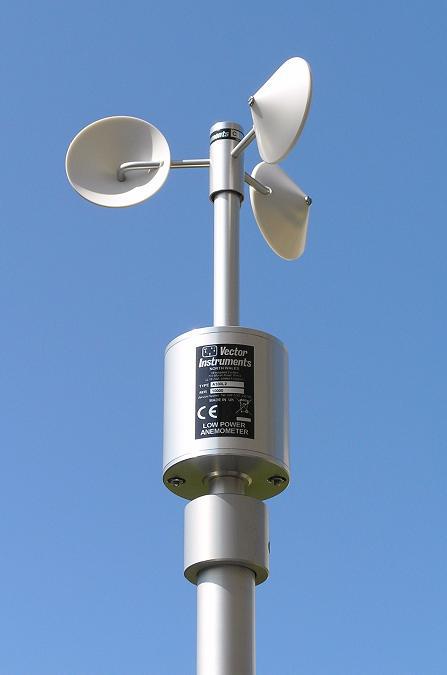Why an Anemometer is Essential for Your Environmental Information Collection
Why an Anemometer is Essential for Your Environmental Information Collection
Blog Article
Exploring the Functions and Benefits of Anemometers for Weather Condition Enthusiasts and Specialists
Anemometers stand as instrumental devices in the world of weather condition surveillance, accommodating both lovers and seasoned professionals alike. These gadgets supply a home window into the dynamic world of wind patterns and rates, offering important data for meteorological evaluation and projecting. From cup anemometers to sonic anemometers, each kind brings its distinct set of applications and advantages, clarifying various elements of weather. As we dig right into the functions and benefits of anemometers, a deeper understanding emerges not only of prevailing climate sensations but additionally of the wider ramifications for markets like wind power production and ecological research.
Importance of Anemometers in Weather Monitoring
Anemometers play a vital duty in climate monitoring by providing precise measurements of wind rate, helping in forecasting and understanding weather condition patterns. These tools, varying from conventional cup anemometers to contemporary ultrasonic anemometers, are crucial for meteorologists, researchers, and weather lovers alike. By determining wind rate, anemometers help in establishing the strength of weather sensations such as cyclones, tornados, and twisters. Furthermore, they offer important information for air travel, maritime procedures, and numerous sectors that are delicate to wind conditions.

Types of Anemometers and Their Applications
The most usual kinds of anemometers consist of cup anemometers, vane anemometers, hot-wire anemometers, and ultrasonic anemometers. Cup anemometers are composed of three or 4 cups installed on horizontal arms that revolve with the wind, measuring its rate. Vane anemometers, on the various other hand, utilize a freely turning vane to line up with the wind direction, offering both wind speed and instructions dimensions.
Each type of anemometer has its unique advantages and applications. Cup anemometers are appropriate and robust for general weather monitoring, while vane anemometers are favored for directional dimensions. Hot-wire anemometers are sensitive to low air speeds, making them ideal for indoor environments. Ultrasonic anemometers are non-intrusive and supply high precision, usually utilized in research study and specialized weather condition tracking applications. Recognizing the attributes and applications of each kind of anemometer is vital for choosing the most suitable instrument for particular weather keeping an eye on demands.
Advantages of Making Use Of Anemometers in Projecting
In meteorology, the usage of anemometers offers important advantages for improving the accuracy of weather projecting. Anemometers determine wind rate and direction, offering crucial data for forecasting weather patterns. By incorporating wind information right into forecasting models, meteorologists can much better understand the motion of weather systems, prepare for adjustments in weather, and problem a lot more exact projections.
Additionally, anemometers play an essential role in examining potential climate risks. Keeping track of wind rates aids forecasters anticipate extreme climate occasions such as hurricanes, hurricanes, and wintertime storms with greater accuracy. This early warning system enables authorities to Go Here release timely informs and carry out necessary precaution, lowering the threats to life and residential or commercial property.
Additionally, anemometers assist in optimizing sustainable energy production. By analyzing wind patterns, meteorologists can identify appropriate areas for wind farms and forecast energy outcome, contributing to the efficient generation of wind power.

Anemometers in Wind Power Manufacturing
Provided the critical duty anemometers play in giving precise wind information for weather condition forecasting and threat evaluation, their relevance encompasses the realm of wind power production. Anemometers are necessary tools in the area of wind energy, where the measurement of wind speed and instructions is vital for determining the usefulness and effectiveness of wind generator setups. By accurately gauging wind rates at varying heights, anemometers assist maximize the placement and layout of wind generators to optimize energy output.
In wind ranches, anemometers are purposefully positioned to collect real-time wind information that is utilized to analyze the potential energy manufacturing of a site. This information is instrumental in identifying the financial feasibility of wind power projects and in forecasting energy generation to ensure grid stability. Furthermore, anemometers aid in keeping an eye on wind conditions to optimize wind turbine performance, protect against damages from high winds, and make sure the security of employees operating in the location of wind generators.
Enhancing Weather Recognizing With Anemometers

Anemometers play an essential function in enhancing our understanding of microclimates. These local climate conditions can vary dramatically from more comprehensive local forecasts, making it necessary to have precise information for details areas. anemometer. By purposefully positioning anemometers in different places, researchers can collect in-depth info on how wind behaves in different terrains, metropolitan settings, or bodies of water
Additionally, anemometers contribute to boosting climate forecasting designs by giving real-time data on wind habits. This info is especially useful for anticipating extreme weather condition occasions, optimizing agricultural techniques, and supporting markets like aeronautics and maritime navigating. On the whole, anemometers are indispensable instruments that enable us to dive much deeper right into the intricacies of weather condition systems, click site ultimately bring about more better-informed choices and exact forecasts.
Final Thought
In conclusion, anemometers play an important role in weather monitoring and forecasting by determining wind rate and direction. Anemometers additionally have applications in wind energy manufacturing, additional highlighting their relevance in both meteorology and sustainable energy industries.
From cup anemometers to sonic anemometers, each type brings its one-of-a-kind collection of applications and benefits, losing light on numerous elements of atmospheric conditions. These tools, ranging from traditional mug anemometers to modern ultrasonic anemometers, are vital for meteorologists, researchers, and weather condition enthusiasts alike. The most typical kinds of anemometers consist of mug anemometers, vane anemometers, hot-wire anemometers, and ultrasonic anemometers. Cup anemometers are robust and suitable for find out this here general weather condition surveillance, while vane anemometers are favored for directional dimensions. Anemometers are necessary tools in the field of wind power, where the measurement of wind rate and instructions is important for establishing the usefulness and efficiency of wind turbine installments.
Report this page